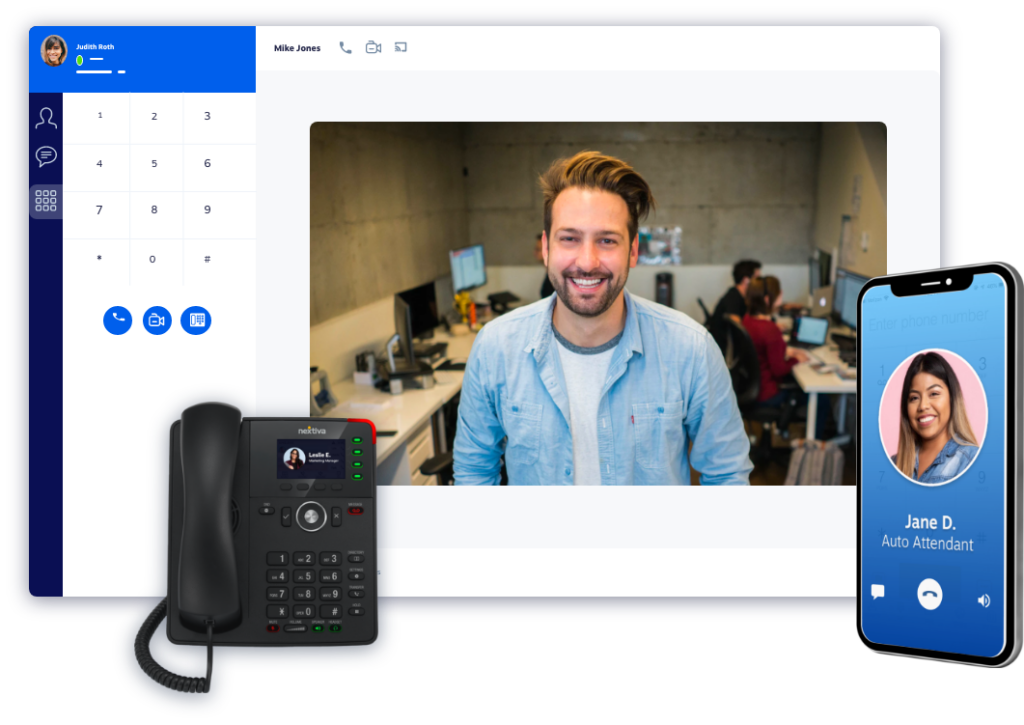The world is becoming increasingly connected through technology, and virtual extensions are at the forefront of this change.
A virtual extension refers to expanding the capabilities or reach of something through virtual or digital means.
For individuals, virtual extensions allow us to connect, learn, work, and access services in new ways. For businesses, virtual extensions provide opportunities to improve operations, reach new customers, and keep up with competitors.
This article explores the concept of virtual extensions, their benefits, and examples of how they are being used today.
We will look at virtual extensions for education, healthcare, customer service, and more.
The potential of virtual extensions is vast, and we have only begun to scratch the surface of how they can enhance our lives and organizations.

What is a Virtual Office Extension?
A virtual office extension, also known as a virtual phone number, is a phone number provided by a third-party service provider that routes calls to wherever the user is located.
The user can access the virtual number from any device, including mobile phones, landlines, or computers.
When a customer calls the virtual number, the call gets forwarded to the user’s preferred device.
The caller ID displays the virtual number, not the user’s private phone number. This allows employees to keep their numbers private while ensuring calls to the business number ring through.
How Does a Virtual Office Extension Work?
Virtual phone numbers work through cloud telephony solutions. Here are the main steps in their work:
- The business purchases a virtual phone number from a service provider. This gives them access to an online dashboard.
- Employees download the service provider’s mobile app and connect it to their devices.
- Incoming calls to the virtual number get routed via the cloud to the employee’s connected devices, using the app.
- Calls can be transferred between devices and employees as required. Features like call forwarding, voicemail, and auto-attendant further enhance call management.
- The administrator can configure specific rules for call flows, such as timing, caller ID, greetings, and more.
Benefits of Virtual Extensions
1. Convenience and Accessibility
Virtual extensions make services, information, and connections more conveniently accessible from anywhere at any time.
Students can take online courses, patients can access telehealth services, and customers can get support through live chats or knowledge bases available 24/7. This makes services available to more people.
2. Cost Savings
Virtual extensions allow organizations to reach and serve people without the costs of physical infrastructure and transportation.
Online education eliminates school building costs, telehealth replaces some doctor visits and chatbots provide customer service more affordably than call centers.
2. Improved Experiences
Virtual extensions can enhance experiences with more engaging multimedia content, personalized recommendations, and interactive features.
Education becomes more engaging with interactive media. Customers get better service through AI chatbots that learn their needs.
4. Increased Productivity
Work can be done more efficiently by collaborating through online tools. Meetings, assignments, and workflows can be effectively managed virtually.
Workers save time previously lost to commuting and manual tasks.
5. Innovation
The capabilities of virtual extensions are constantly improving as new technologies emerge. 5G networks, AI assistants, extended reality, and more will enable innovations we can’t yet imagine.
Organizations that embrace virtual extensions position themselves to take advantage of future opportunities.
Examples of Virtual Extensions
1. Remote Learning and Education
Some of the most widely used virtual extensions support online education and remote learning.
Learning management systems like Canvas allow teachers to share assignments, multimedia resources, and grades with students.
Videoconferencing tools like Zoom facilitate remote lectures and discussions.
Massive open online courses (MOOCs) make courses from top universities around the world accessible to unlimited students globally. These virtual learning tools expand access and flexibility.

2. Telehealth Services
Telehealth leverages technology to provide health services remotely through video chat, digital images, and data sharing.
Patients can consult doctors through virtual visits, get diagnoses without traveling, and receive care from specialists anywhere.
Telehealth improves accessibility, reduces costs, and allows physicians to virtually extend their reach.
3. Live Chat Support and AI Bots
Customer service is being transformed by virtual extensions like live chat platforms and AI-powered chatbots.
These provide convenient alternatives to phone and email support that can efficiently handle common inquiries at all hours. Customers get quick answers and companies save on staffing costs.

4. Payment Systems
Mobile payment services have emerged as a convenient virtual extension of wallets. Apps like Venmo, PayPal, and CashApp allow money transfers using only a recipient’s username or QR code.
Cryptocurrency networks even facilitate payments without financial institutions using blockchain technology.
These innovative fintech solutions are disrupting traditional payment methods.

5. Virtual Reality
Extended reality (XR) refers to immersive virtual environments and simulations accessed through hardware like VR headsets.
XR allows users to interact with digital objects and scenarios as if they were real. XR applications span gaming, training, tourism, healthcare, design, and beyond, enabling experiences that are otherwise difficult or impossible.
XR virtually extends our physical capabilities and environments.
6. Smart Infrastructure
From smart homes to cities, connecting infrastructure like buildings, grids, and roads to the internet is generating data and capabilities that extend their functionality. Smart thermostats remotely adjust home temperatures.
Smart grids balance electricity distribution. Smart traffic systems track and redirect autonomous vehicles.

Integrating intelligence and connectivity through virtual extensions unlocks more efficiency, automation, and innovation.
The potential for virtual extensions is constantly evolving alongside emerging technologies. While we can’t fully predict the future, virtual and augmented realities, AI, 5G, and the Internet of Things will certainly enable many more as-yet-unimagined virtual extensions.
Their benefits make adoption and innovation in this space a priority for individuals and organizations across sectors.
Setting Up a Virtual Number: Key Steps
Here are the key steps involved in getting set up with a virtual phone number:
1. Select Service Provider
Research different service providers and select one that best matches your business requirements and budget.
2. Choose Virtual Number
Select the virtual number – toll-free or local number with preferred area code. Some providers allow porting of existing numbers.
3. Configure System
Set up the phone system, configure call flows and routing rules, voicemail, greetings, etc. as per needs.
4. Connect Devices
Download the smartphone app to connect devices to the system and enable call forwarding.
5. Train Employees
Train employees on using the system, app features, transferring calls, etc. to ensure smooth operations.
6. Migrate Existing Numbers
Port over existing business phone numbers to the new virtual phone system.
7. Monitor and Optimize
Track usage, and analytics to identify areas of improvement and keep optimizing the workflow.
Conclusion
A virtual office extension is a powerful technology solution for enabling seamless communications for the modern, distributed workforce.
By providing businesses with geographic and device flexibility, cost savings, and enhanced customer experience, virtual phone systems deliver immense value.
Small and mid-sized businesses can benefit greatly by adopting virtual numbers from reputed and reliable service providers.
With the right platform in place, companies can boost productivity and collaboration even as remote work continues to accelerate.
The ability to configure the system as per evolving needs provides further agility. As businesses prepare for the future of work, they would do well to evaluate incorporating virtual phone technology as part of their long-term strategy.
Frequently Asked Questions (FAQ)
Ques 1. What are the main advantages of a virtual phone system?
Ans. The main advantages are increased mobility, flexibility, cost savings, and enhanced customer service. With easy call routing across devices and geo-locations, businesses can operate smoothly even with a distributed workforce.
Ques 2. Does it work globally?
Ans. Most providers offer toll-free numbers and connectivity across multiple countries. However, some advanced features may only work in certain regions. Check with your provider on international availability.
Ques 3. Can it replace traditional phone lines?
Ans. For most small businesses, a virtual phone system can completely replace landlines. For larger enterprises, it can effectively complement existing PBX infrastructure as part of a cloud migration strategy.
Ques 4. What are the pricing models?
Ans. Pricing models include per user/month, per number/month, pay per minute, or customized packages. Prices vary by provider but are generally cost-effective.
Ques 5. Is number porting available?
Ans. Most providers allow porting over existing numbers to the virtual phone system. This enables continuity for businesses with existing numbers that customers/vendors are already familiar with.






